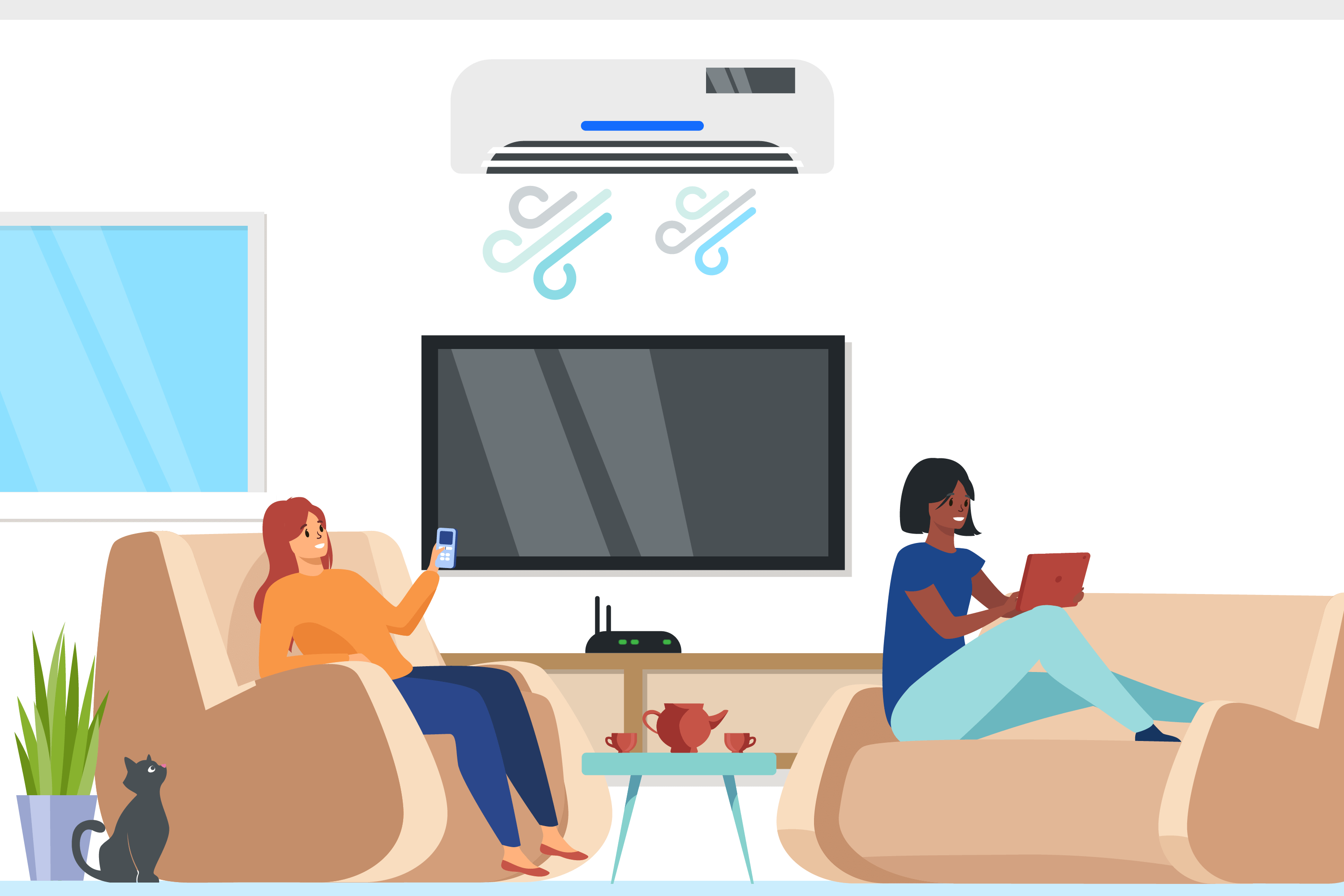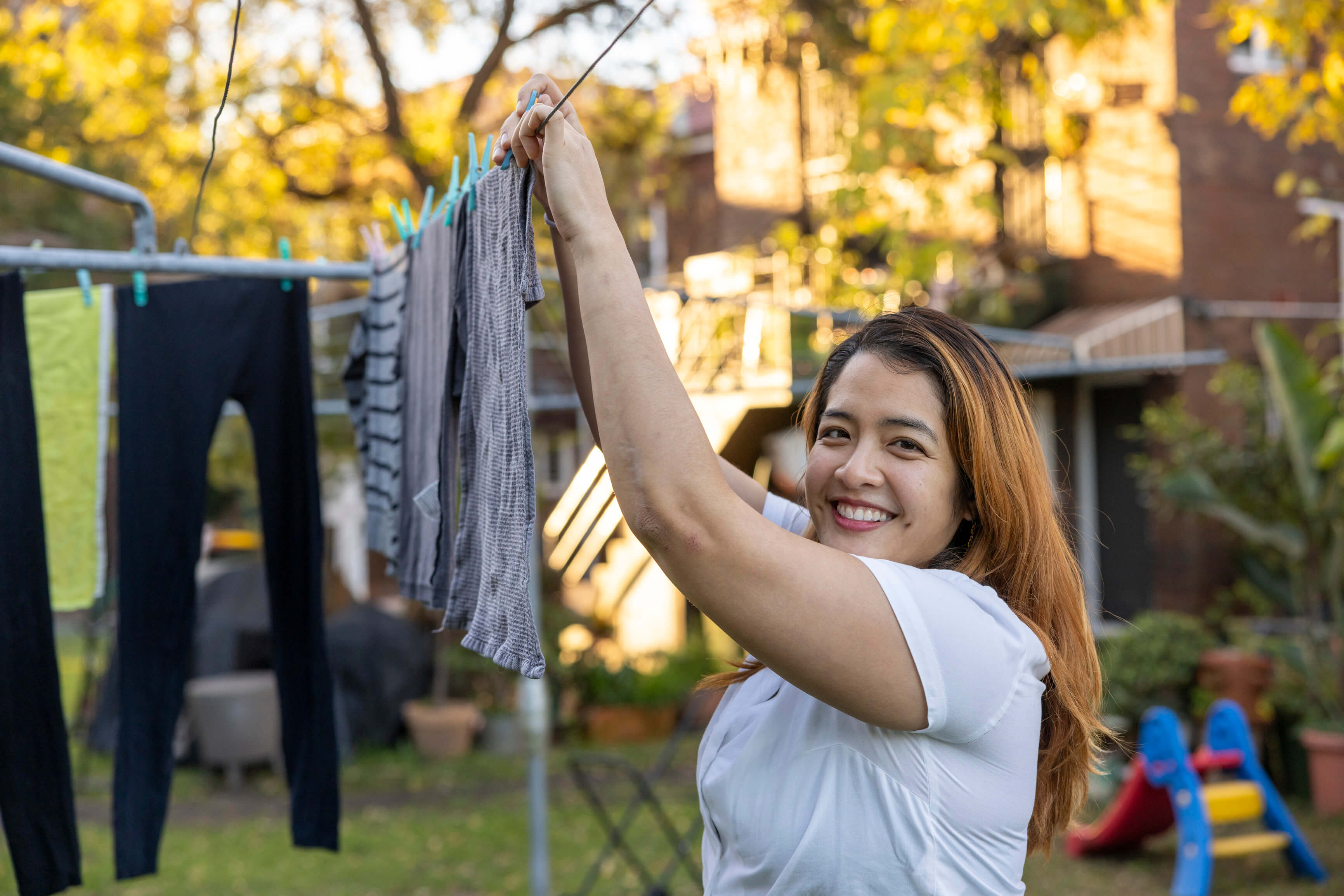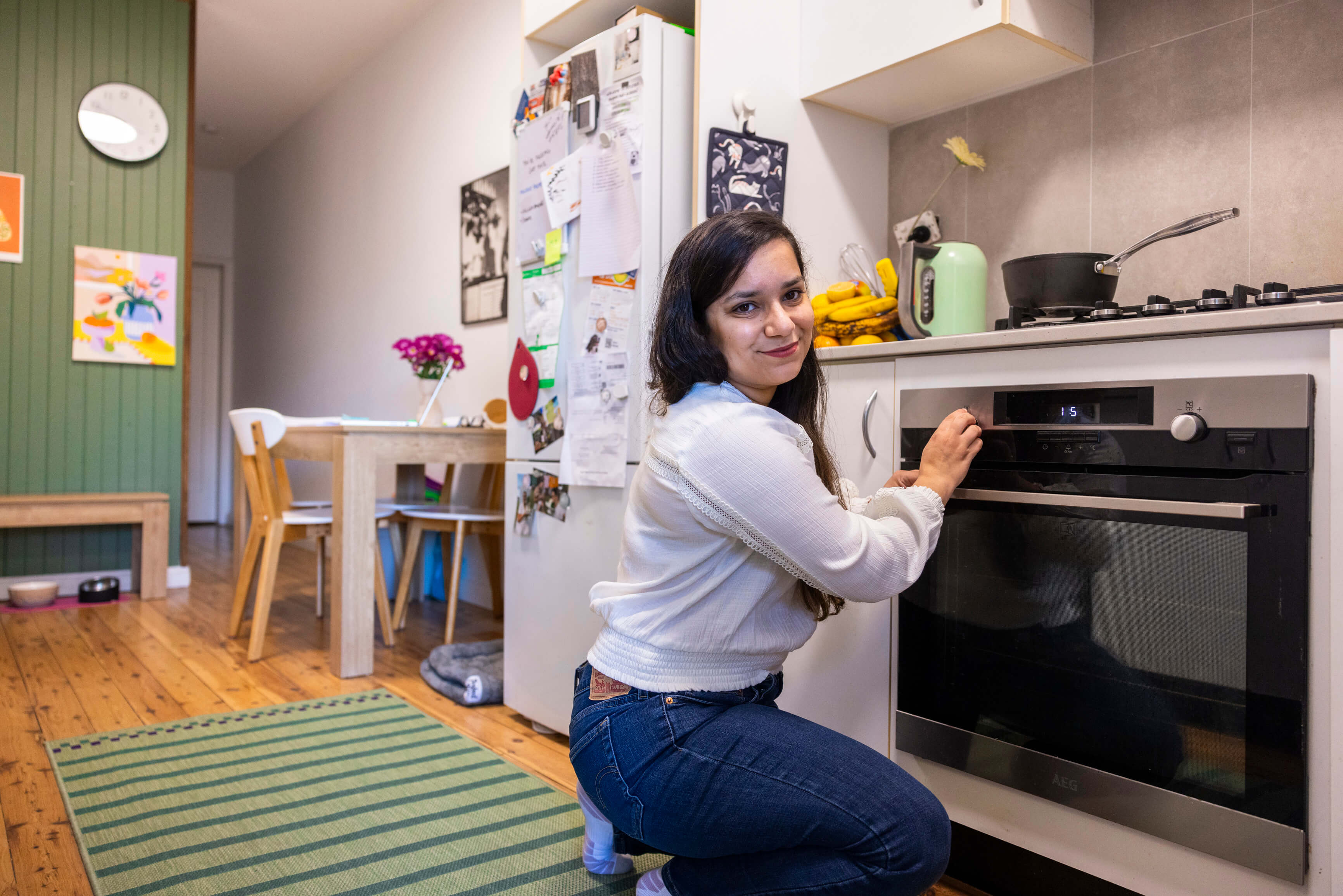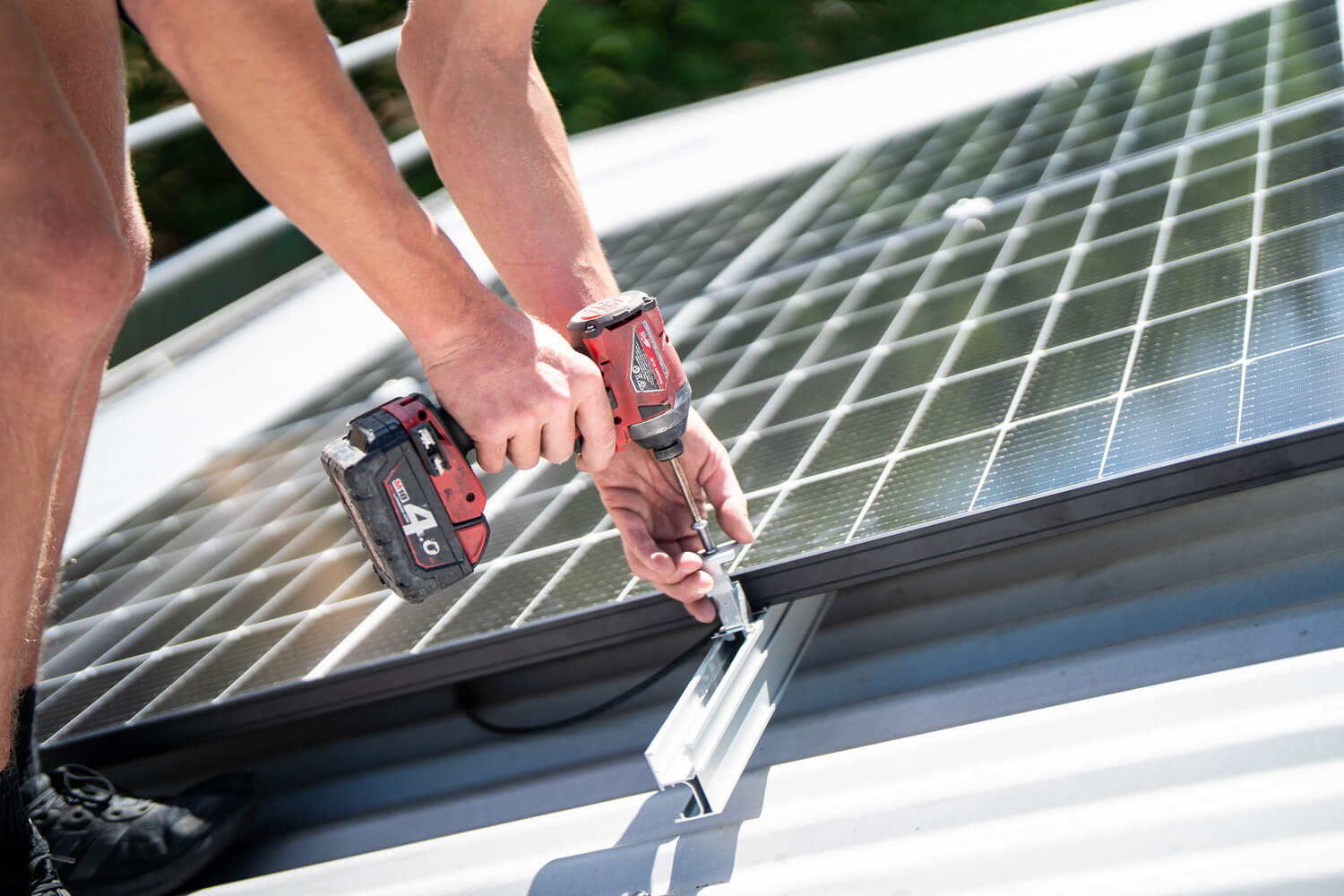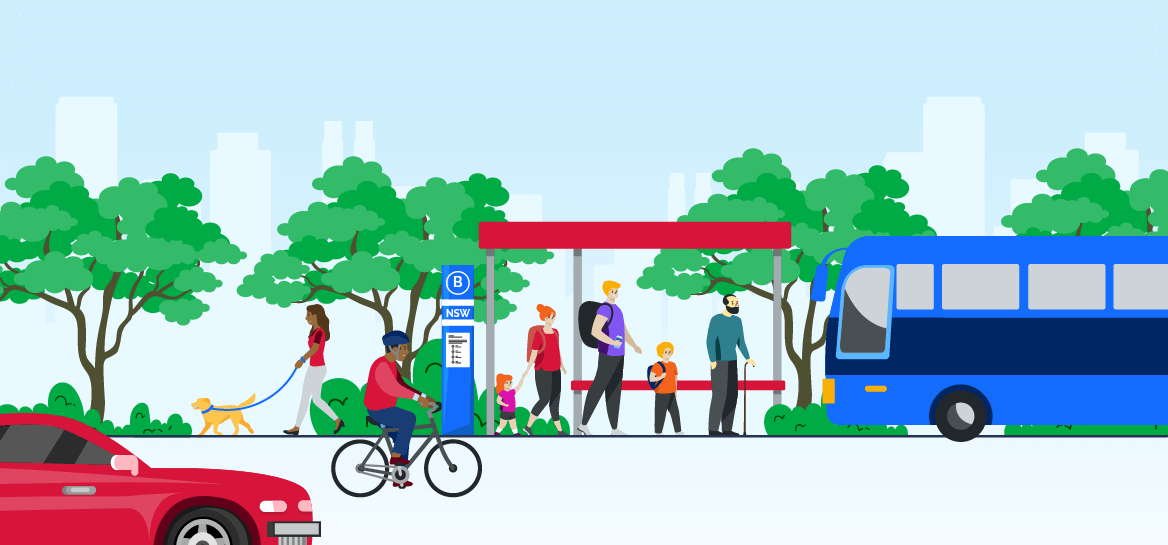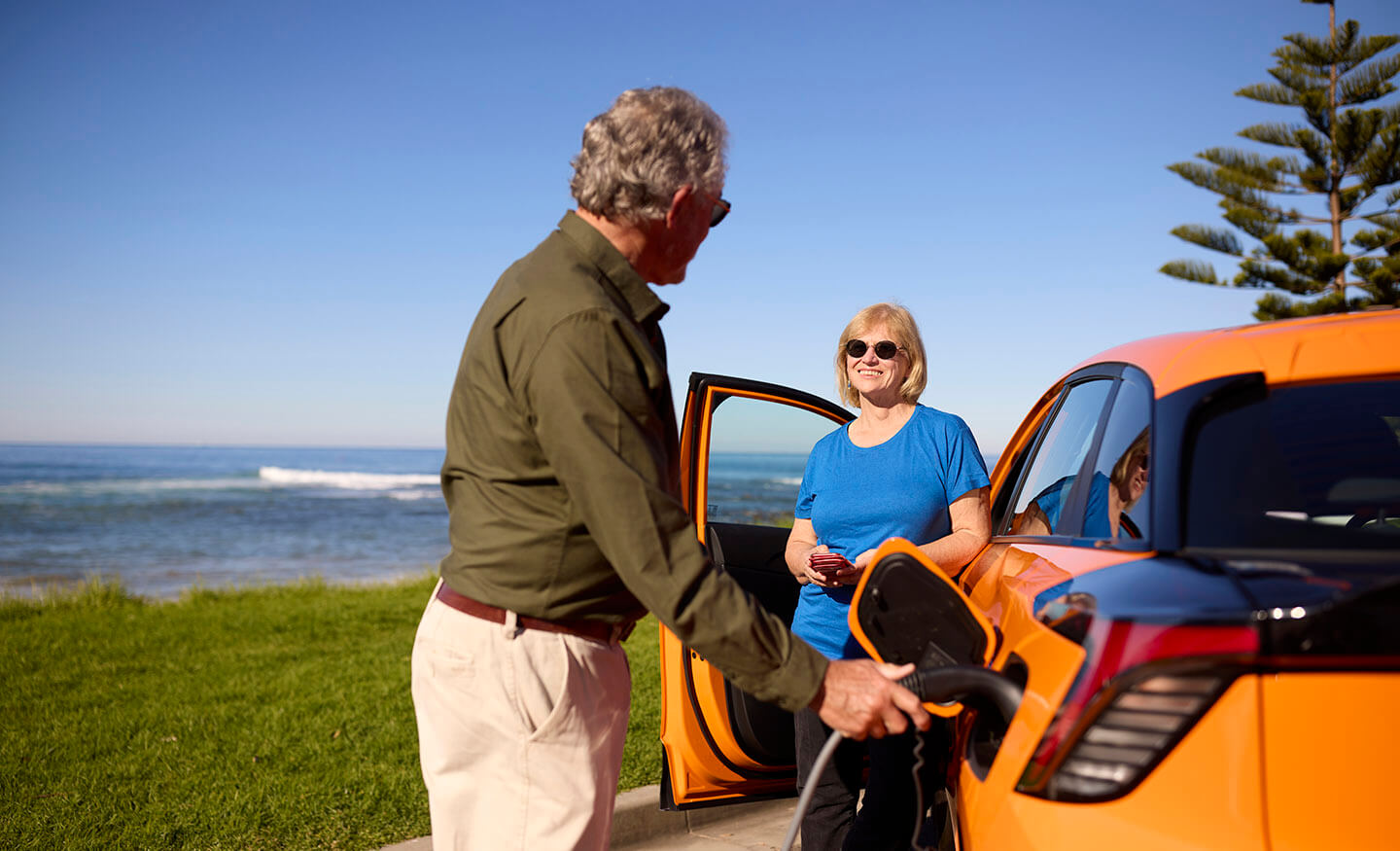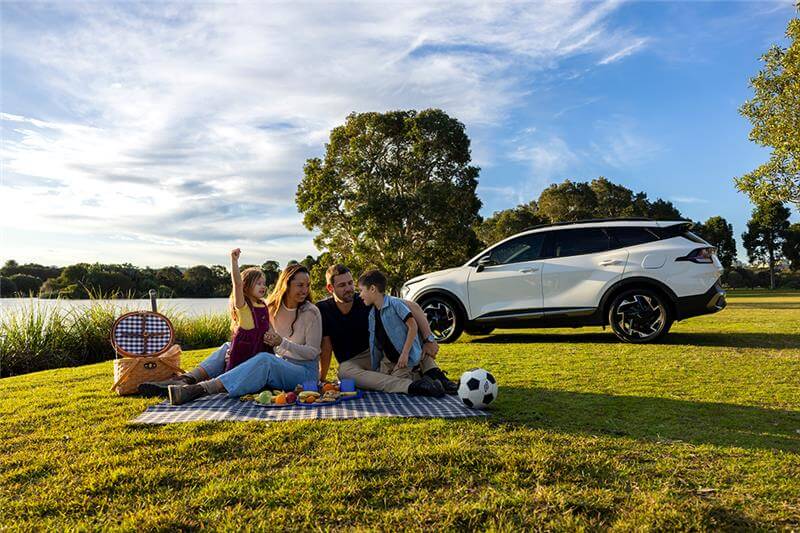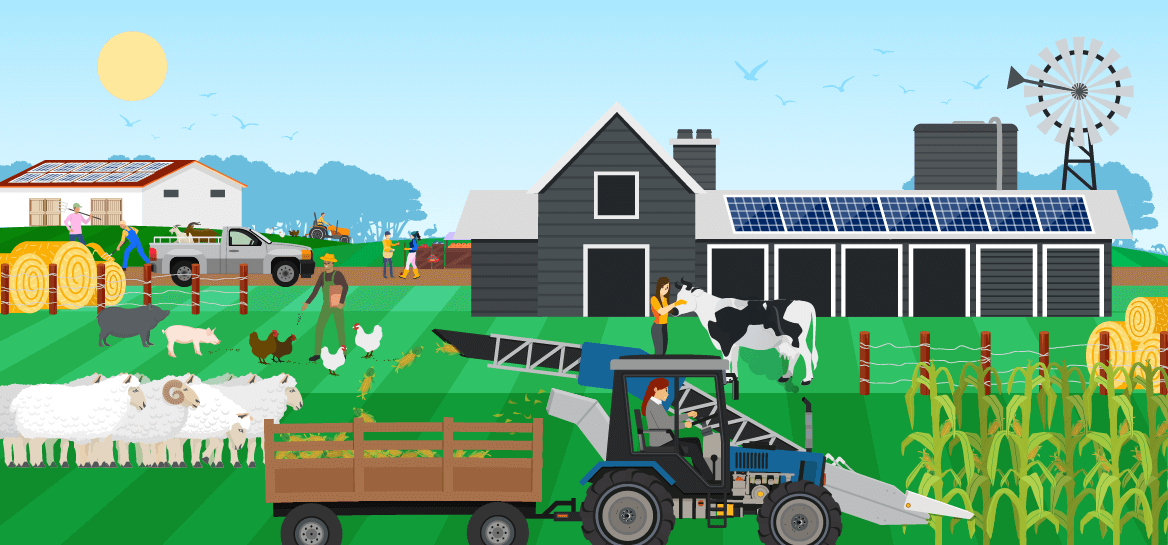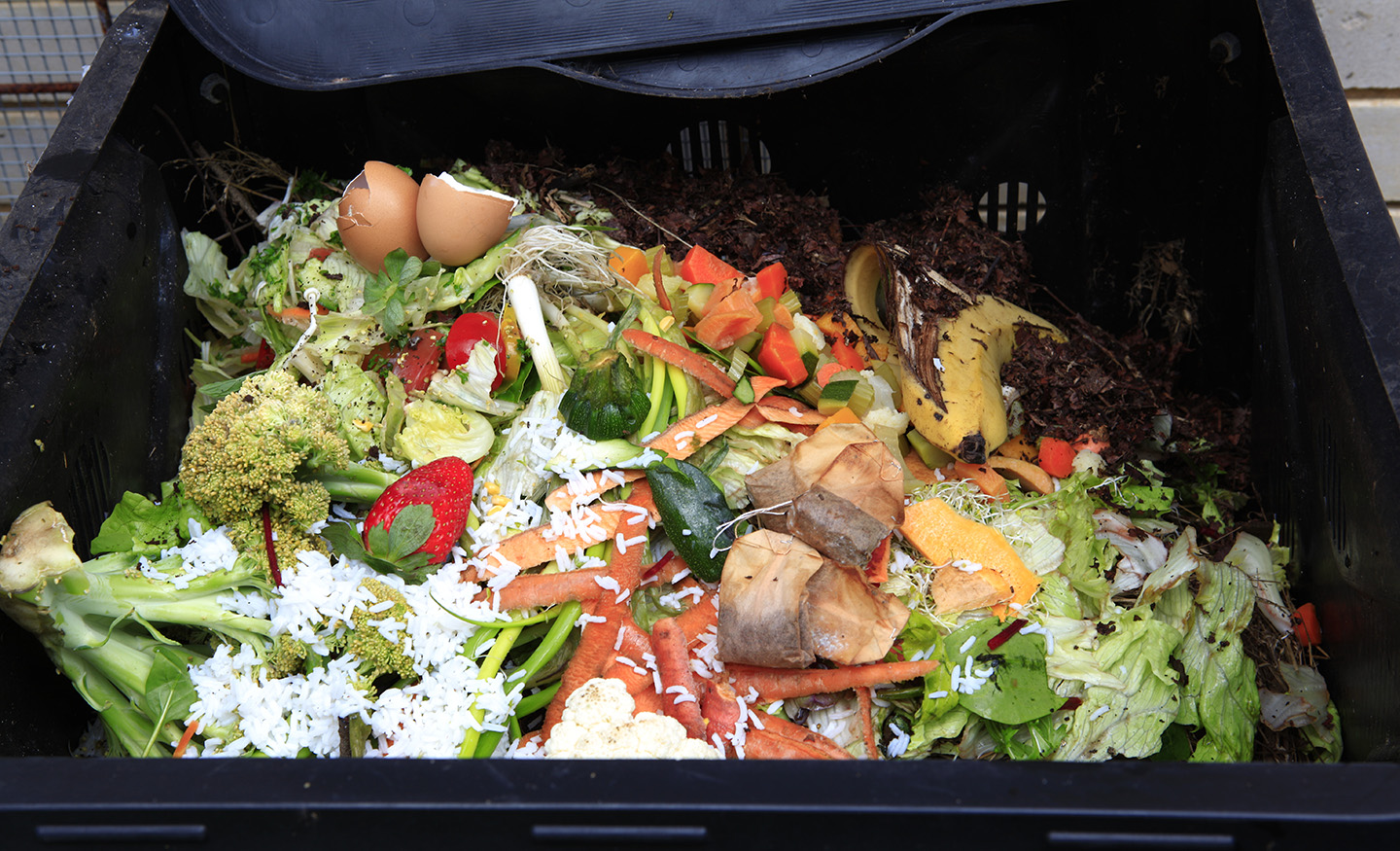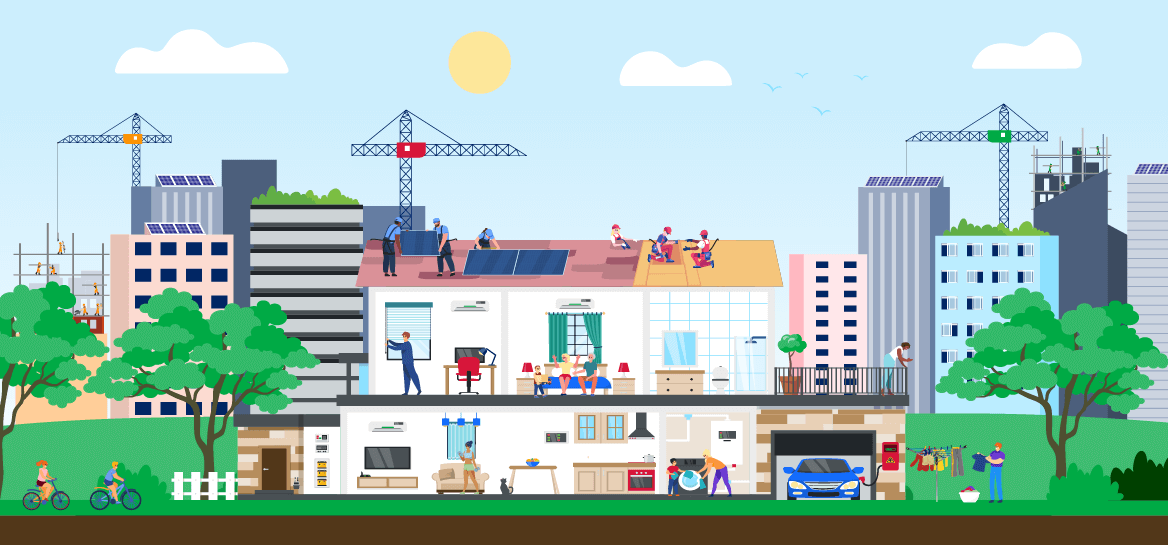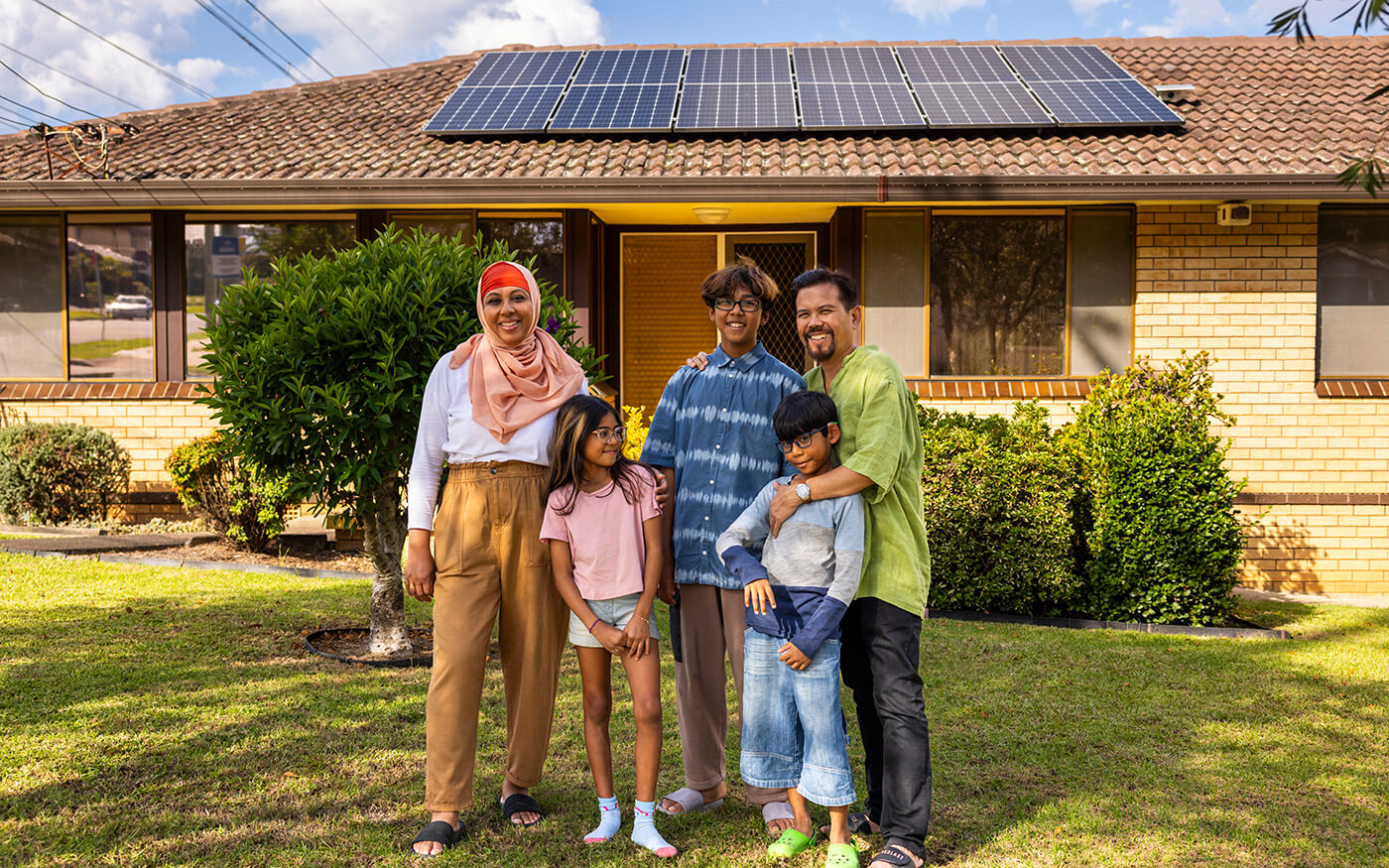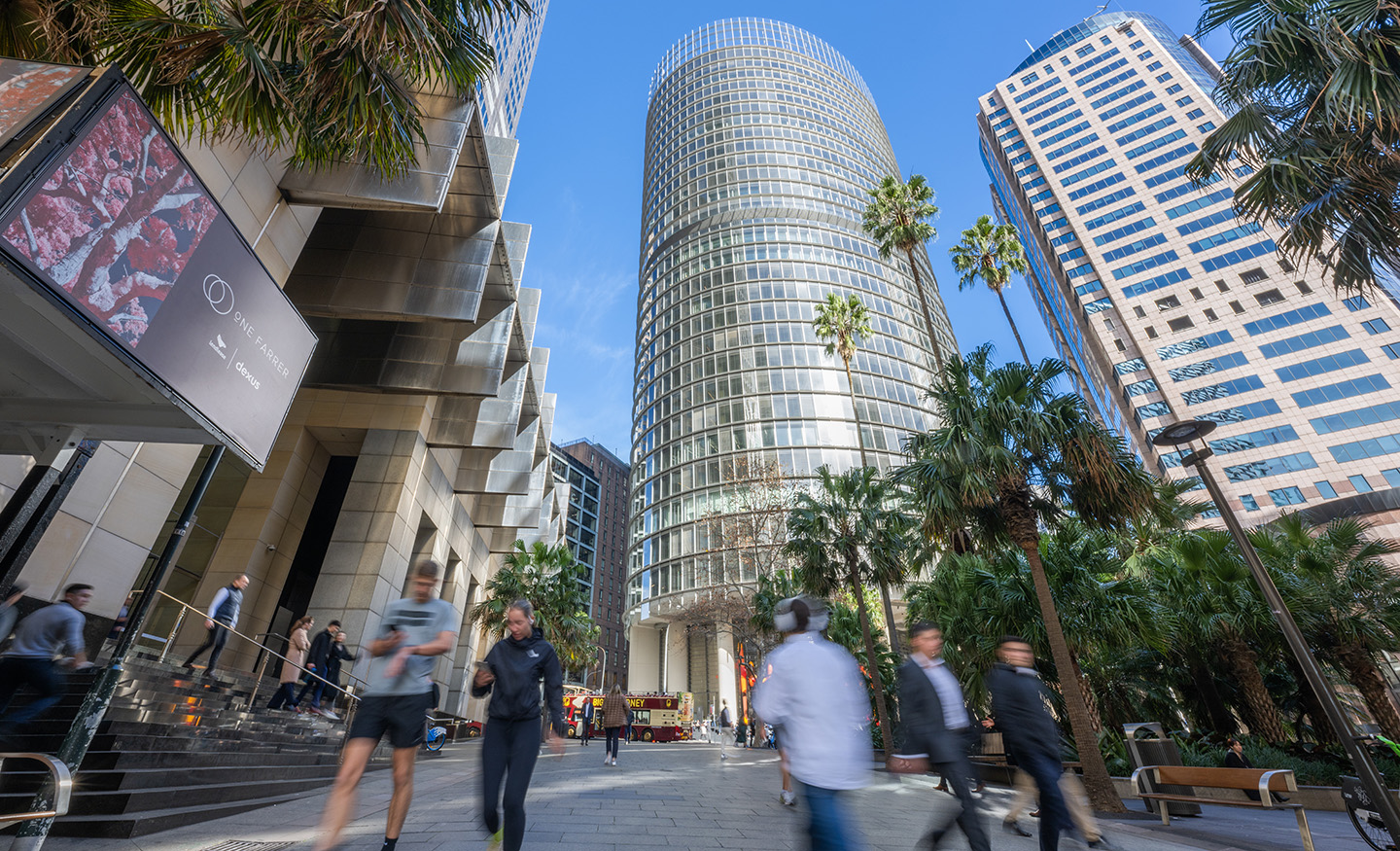Net zero and you
From saving energy, building more sustainable homes, driving smarter or reducing waste, there’s plenty of simple things you can do to save money and help NSW reach net zero. When you're ready for bigger projects, we'll be there to help.
We can reach net zero by 2050
How many decisions have you made today? They may seem small, but they add up to help reduce emissions and get us to net zero.
Turning your air conditioner down by a degree, bringing a cup to the cafe, buying local. Or if every person in New South Wales decided to leave their car at home today, in just one day we'd reduce emissions by almost 35,000 tonnes, the same as planting 580,000 trees.
Reaching net zero is about making the small decisions that matter to you and fit your way of life. They can be small, they can save you money, make your home more comfortable, and it feels pretty good to do something for your community and our planet. And we're here to help, because it's up to all of us.
Together is the only way we will achieve net zero by 2050. So what are you going to do today? Because it all adds up to net zero.
To reach our targets, we all need to make changes to the way we:
- source and use our energy to reduce direct emissions
- drive and transport the goods we need
- feed and clothe ourselves and deal with our waste by implementing a circular economy
- build our homes to be sustainable and suit our climate
- develop and use land to improve carbon storage and minimise emissions
- protect and maintain nature to increase biodiversity and offset emissions.
Saving energy and net zero
How to save energy
Before rushing out to buy solar panels and new appliances, you need to discover what's using the most energy in your home. For the average household:
- 40% of energy is used for cooking and other appliances
- 29% is used to heat water
- 27% is used to heat and cool our homes
- 4% is used for lighting.
Watch our NSW Sustainability Awards Young Climate Change Champions at Belltrees Public School share their energy tips
This is how we save energy.
By using solar panels.
LED lights.
Energy efficient appliances.
And power point timers that save energy overnight.
It all adds up to net zero!
Towards net zero at home
Tips to reduce your bills and play your part in reducing our emissions.
From upgrading your air conditioning to hot water systems, find ways to save on your energy bill.
We’re helping households replace fossil fuel led-power with solar, reducing emissions and putting downward pressure on energy prices for everyone.
Sign up for GreenPower with your energy supplier so you can be sure you’re buying independently accredited renewable energy from reliable sources.
Transforming transport
The transport sector remains largely focused on fossil fuels, while the energy sector is transitioning to clean energy sources like solar and wind. As the energy transition continues, we expect transport to overtake energy as the leading source of emissions by 2035.
Getting more electric vehicles (EVs) on the roads is an important step in decarbonising our transport system. If you’re not quite ready for an EV, there’s also plenty of simple things everyone can do to save fuel costs and reduce our transport emissions.
Driving down emissions
The average car produces about 2.1901 tCO2e each year. That means leaving your car at home is the number one way to reduce emissions. That might not always be practical, but planning your journeys, so you drive less, and practising ‘eco-driving’ behaviours will save you fuel and money.
It all adds up to net zero, whether you:
- use public transport
- walk or bike to work
- take a long-term view and drive an EV.
Tips to save fuel costs and reduce emissions
- Drive slower (and safer). Higher speeds use more fuel.
- Leave a gap to the car in front, so you can brake and accelerate more gently.
- Change through the gears faster, so you don’t ‘over-rev’ the engine.
- Don’t idle away your fuel if you’re sitting still.
- Turning off the air conditioner can reduce fuel use by up to 25%.
- Service your car regularly for fuel efficient running.
- Look after your tyres with a wheel alignment.
- Run tyres at the right pressure for extra safety and up to a 3% fuel saving (Your tyres will also last longer, increasing the savings).
- Don’t carry heavy items in your car when you don’t need to.
- Remove roof racks to reduce air resistance. This can save up to 20% in fuel.
- Think about a holiday closer to home.
- Plan your trip to do more than one errand, saving time and fuel.
- Buy closer to home. Fewer goods, transported over shorter distances means fewer heavy vehicles and less cargo flights so fewer emissions.
We’re helping make NSW the easiest place to buy and use an electric vehicle in Australia.
The average EV driver saves about $1,000 a year in running costs compared to petrol car drivers. EVs are quieter and reduce both air pollution and greenhouse gas emissions.
Vehicle Emissions Star Ratings tell you the environmental impact and running costs for cars. Use the tool to compare your current vehicle(s) or help you compare options that suit you and are better for the environment. Compare data across more than 16,000 vehicles.
Your choice can drive big changes.
Net zero food
It’s not just growing food that produces emissions. Processing, packaging, transporting, selling and preparing your food and dealing with wasted food all contribute emissions.
No matter what you eat, buy local, seasonal products from sustainable farms and local markets to reduce food-related emissions. That way you won't add extra emissions from refrigeration, packaging and transport. Buy only what you need and try to use up food leftovers. It all adds up to net zero.
Tips to save on emissions and your food bill
If every family ate one less kilogram of beef each week, we’d save at least 12 kg of emissions from the farm.
Emissions vary depending on farm practices, processing and whether your meat is homegrown or imported.
Some imported meats may produce as much as 100 kgs of emissions, from different farm practices, processing and transportation.
If you’re not a fan of vegetables, you can swap out for other meats. Smaller animals generally have a smaller environmental footprint (like sheep), as do animals that are not ruminants (like pigs, chicken and fish). It’s more important to buy local, seasonal food from sustainable farms.
Transporting fruit and vegetables can generate twice as many emissions as growing them. How your food is packaged and processed also makes a big difference.
So no matter what type of meat you eat, or even if you’re vegetarian, buy unprocessed foods and shop local where you can. Better yet, grow your own fresh fruit and vegetables. You’ll reduce emissions from refrigeration and transportation, produce will be fresher and you’ll be eating healthier.
In 2022-23, 290,000 tonnes of food waste was collected through kerbside pick-ups and sent to landfill. And when food breaks down in landfill, it generates methane.
Plan your meals and eat ‘shoot to root’ and ‘nose to tail’ to reduce food waste. The Love Food Hate Waste website has some great recipes to help you make the most of your household food budget.
Get some tips from our climate change champions at Belltrees Public School on how to use a worm farm to use food scraps to produce compost to help grow your own vegetables.
Watch our NSW Sustainability Awards Young Climate Change Champions at Belltrees Public School share their tips for reducing food waste
This is our worm farm!
This is how we reduce food waste.
We put our food scraps in the worm farm.
Then we mix it around.
We put paper and woodchips for carbon.
Then we put grass in for the nitrogen.
The last step is water so then it can hydrate the microorganisms and worms.
It all adds up to net zero!
More than a third of the waste sent to landfill is food. The average household throws out $2,100 a year, and about $10 billion worth of food is thrown away every year by NSW households. And when food breaks down in landfill it generates methane.
Your net zero buying power and waste
Australia is a wealthy country and we like to spend. We can all use our financial power to send a message to the businesses we buy from that it’s time to reduce emissions.
It’s not just businesses manufacturing goods that create emissions. It’s also how they are, packaged, delivered and disposed of. Treating our waste generates about 4.3 million tonnes of emissions a year and we’re fast running out of landfill space.
You can get value for money and improve the environment by making smart decisions about what you need and where you get it from.
Because it all adds up to net zero.
Buy natural and less processed products as they use less energy to produce.
Buy products with little or no packaging, especially plastic. In 2022–23, NSW generated 891,000 tonnes of plastic waste.
The NSW Government aims to reduce total waste generated by 10% per person in NSW by 2030.
Buy closer to home if you can. Online shopping can save time and effort. But, if you buy cheap overseas products, consider the cost in emissions to transport them.
You might also need to pay extra to maintain or replace any poor-quality products.
Take your eligible bottles, cans or cartons to one of the hundreds of return points across NSW. You’ll earn 10 cents for every drink container you return and help reduce CO2 emissions.
Reuse, repair and recycle products to save money and reduce the amount of resources we use.
It’s time to check out those op shops and local online marketplaces for your next outfit. NSW throws away more than 300,000 tonnes of textiles a year.
About 17% of clothing ends up in landfill and ‘fast fashion’ accounts for 8 to 10% of global emissions.
Check your investments (like superannuation) to be sure your money is supporting industries that align with your personal values.
You can also check that you’re getting the best deal available and maybe save some money at the same time.
Building net zero homes
Emissions from the built environment have doubled in the last 20 years and continue to climb.
The largest source of emissions in NSW is from using fossil fuels like gas for hot water, heating and cooking in our buildings and diesel used for construction.
Making your home more efficient
Australian homes are often hot in summer and cold in winter. We need to work together to make them more efficient, more comfortable and healthier for everyone to live in across the seasons.
You can improve our homes thermal performance by:
- installing ceiling and wall insulation (homes with insulation use 19% less energy)
- replacing standard windows and glass doors with double glazed ones (windows in Australia have energy ratings – the more stars, the more you’ll save)
- using curtains and blinds to help control the temperature in your home.
If you’re not ready for renovations, make sure you seal up any gaps by:
- installing bottom door seals or using door snakes
- plugging gaps in walls with silicone sealant or foam fillers
- pulling your curtains or blinds shut on hot or cold days.
Across the state, record numbers of households are installing solar to cut their electricity bills and reduce carbon emissions. Over 30% of homes now using solar.
There are numerous incentives from the NSW Government and the federal government for both solar panels and battery systems. We also have incentives for other upgrades. Check out our current household energy saving upgrades.
- Switching your appliances to all electric reduces energy costs and emissions.
- When you’re ready to upgrade, check out the energy use of new appliances on the energy rating calculator.
From making sure you catch the sun at the right time of the day, to painting your roof and external walls, passive design can help create healthier, more energy efficient and comfortable homes that cost less to run. Check out ways to create more energy efficient and comfortable homes that cost less to run in Australia’s guide to environmentally sustainable homes.
The NSW Government is introducing a new scheme where people selling or leasing homes can choose to share a home’s energy rating. It will help buyers and renters know how much energy the home might use, and how much it might cost to run.
Nationwide House Energy Rating Scheme (NatHERS). Learn about our home energy ratings trial.
Not only are gardens a beautiful addition to your home, they help reduce emissions and can improve your home’s thermal quality. Plant trees that lose their leaves in winter on the north side of your home to provide shade in summer, but let the sun shine in when it’s need in colder months. Getting out in the garden is also great for your physical and mental health.
Our Consumer Energy strategy will help cut energy bills and make homes and businesses more comfortable and sustainable.
See how we’re powering people and communities to access the benefits of energy saving technologies solar batteries and energy efficient appliances.
For non-residential buildings we’re moving towards net zero through the National Australian Built Environment Rating System (NABERS) for new and existing buildings.
The construction industry also requires products such as steel, cement, glass and aluminium, which produce large amounts of emissions. Read more about how NSW is the most active state in Australia in addressing embodied carbon.
In the meantime, we’re working with businesses and industry and primary producers to ensure that high emitters are moving to a low carbon future.
Government, businesses and individuals must all play a part, if we’re to reach net zero by 2050.

